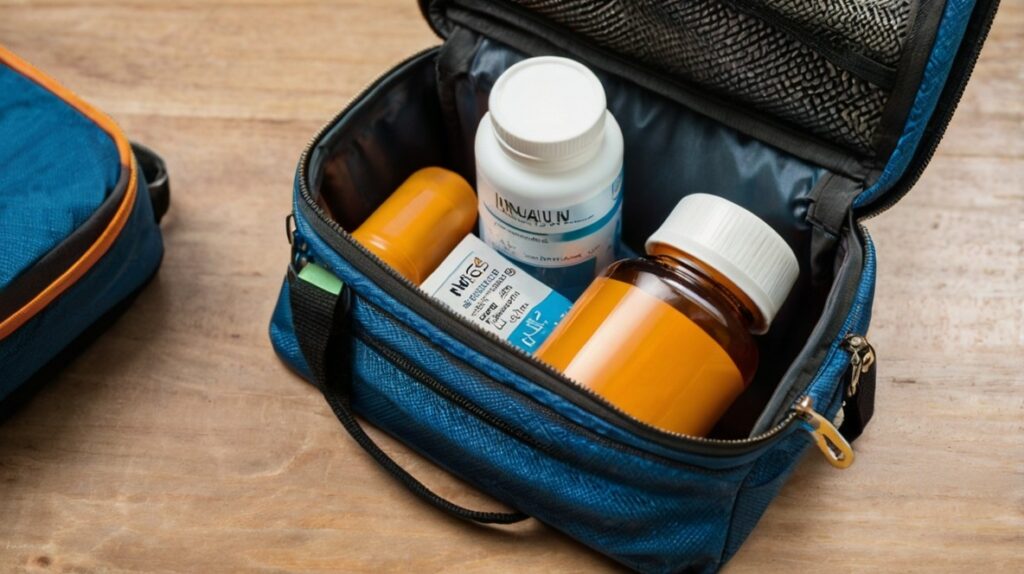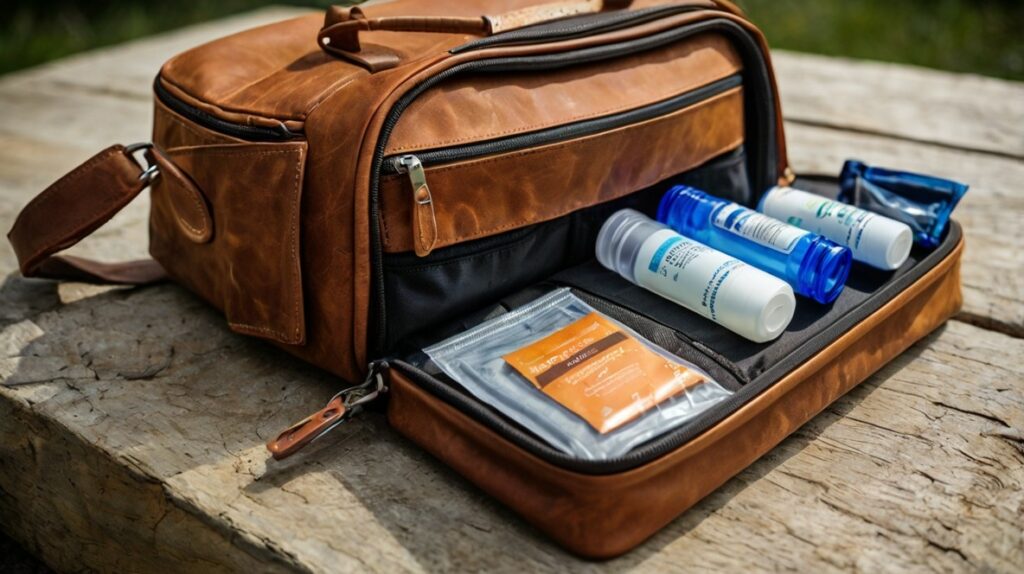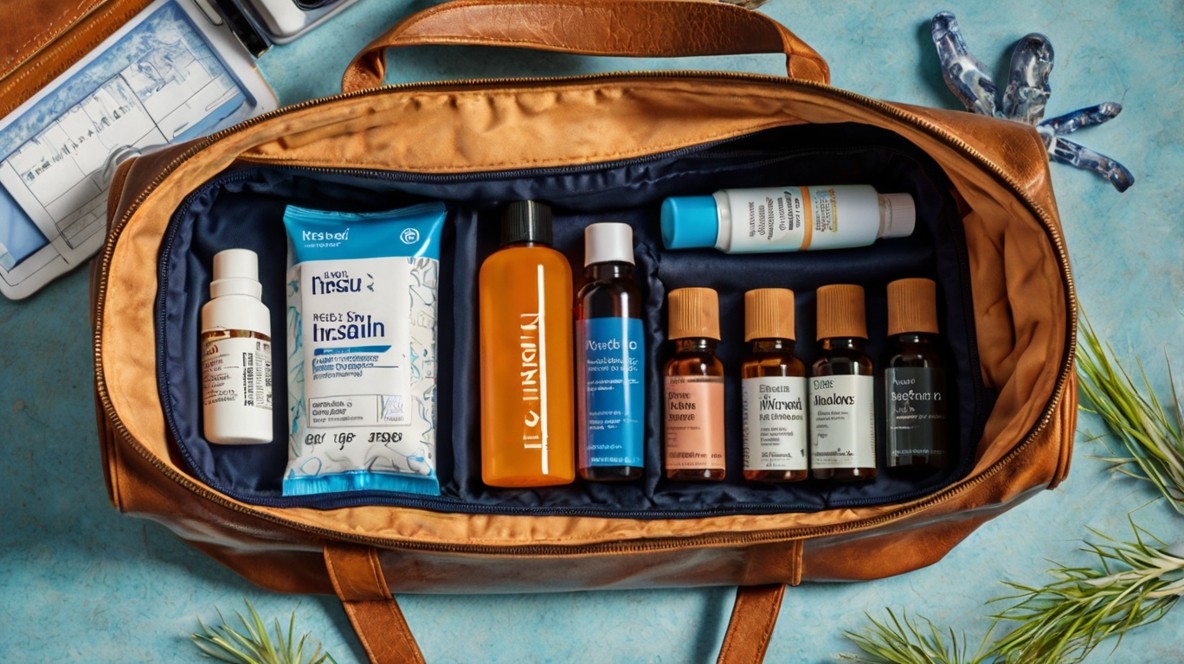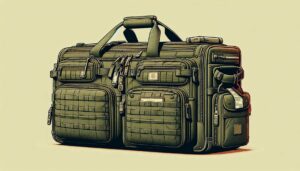For people with diabetes, insulin management is key to living a healthy and active life. However, when it comes to traveling, the challenge of keeping insulin safe and effective can be quite a headache. This is where travel bags for insulin become crucial. Let’s dive deep into these magical bags that can make your vacation more comfortable and worry-free!
I. Introduction
A. The importance of insulin management while traveling
Fellow diabetics, we know how vital insulin is in our lives, right? Well, when traveling, we can’t be careless about storing this precious insulin. Just imagine, you’re enjoying the beautiful beaches of Bali, and suddenly your insulin goes bad because of the heat. Talk about a mood killer for your vacation!
B. Challenges of carrying insulin during travel
Carrying insulin on a trip isn’t a walk in the park, folks! There are many things to consider, from keeping its temperature stable to protecting it from shocks, and ensuring insulin is always within reach when needed. Not to mention if you’re traveling abroad, there are special rules to follow. Complicated? Indeed. But don’t worry, we’ll discuss the solutions!
II. Understanding Insulin Storage Needs
A. Ideal temperature for insulin
Insulin is like a princess in a fairy tale; it must be treated with utmost care. The ideal temperature? Between 2°C to 8°C (36°F to 46°F). But don’t fret, insulin in use can survive at room temperature (up to 25°C or 77°F) for about 28 days. Remember, this isn’t a rubber law that can be stretched as you please!
B. Risks of exposure to extreme temperatures
Now, this is what makes us anxious. Insulin that’s overheated or frozen can become ineffective. Imagine, you’ve traveled all the way to Mount Bromo, but your insulin throws a tantrum because of the extreme cold. Or while you’re chilling on Kuta Beach, your insulin gets ‘sunburned’. Scary, right?
III. Types of Travel Bags for Insulin

A. Specialized insulin cooling bags
This is the champion! Specialized insulin cooling bags are designed specifically to keep insulin in its comfort zone. They usually come with cooling gels that can maintain a stable temperature for hours. Perfect for those who love long-distance travel or going to extreme places.
B. Portable insulated bags
Now, these are more compact and practical. Ideal for short trips or business travel. Although smaller in size, their temperature maintenance capability is no less impressive!
C. Multi-compartment storage bags
This is the favorite of diabetic travelers who like to bring lots of supplies. Besides space for insulin, there are also compartments for syringes, blood sugar test strips, and other equipment. It’s all in one!
IV. Important Features in Insulin Travel Bags
A. Effective insulation
This is absolutely mandatory! Good insulation can keep your insulin safe even if it’s as hot as a desert or as cold as the poles outside. Look for bags with the latest insulation technology that can maintain a stable temperature for at least 12 hours.
B. Portability and comfort
Hey, don’t let your insulin bag become a burden. Choose one that’s light but still sturdy. Some are shaped like waist bags, others can be slung over the shoulder. Just pick the one that fits your travel style best!
C. Storage capacity
Now, this depends on your needs. Want to bring insulin for a week or a month? Make sure the bag is big enough to accommodate all your needs, but not too big, or it’ll be cumbersome to carry around.
D. Durability and security
Fellow diabetics, this insulin bag isn’t just any ordinary bag. It must be shock-resistant, waterproof, and have a secure locking system. After all, insulin is a very valuable medicine, so why would we store it in a bag that’s easily damaged or breached?
V. Choosing the Right Insulin Bag for Your Needs
A. Considering trip duration
Planning a day trip or a world tour? The duration of your journey is crucial in choosing an insulin bag. For short trips, a portable insulated bag might be enough. But for longer travels, it’s better to opt for a specialized cooling bag that can maintain temperature for longer.
B. Type of transportation used
Flying, taking a train, or going on a road trip? Each mode of transportation has its own challenges. If you’re flying, make sure your bag complies with airline regulations. For a road trip, you might need a bag that can be charged in the car.
C. Amount of insulin and supplies to carry
This is also important. Calculate carefully how much insulin and supplies you need during the trip. Don’t let the bag be overfilled or too small. Remember, it’s better to bring more than to run short!
VI. Tips for Packing Your Insulin Bag for Travel
A. Arranging supplies efficiently
Don’t just toss everything in, folks! Arrange everything neatly so it’s easy to retrieve when needed. Put insulin in the most protected part. Then, group other supplies based on their functions. For example, keep syringes and alcohol swabs together.
B. Using cooling gels or ice packs
These are like bodyguards for your insulin! Make sure your cooling gels or ice packs are completely frozen before putting them in the bag. But remember, don’t let them come into direct contact with the insulin bottles, or you might end up freezing your insulin!
C. Ensuring quick accessibility
In emergency situations, you need to be able to grab your insulin quickly. So, position it for easy reach. If necessary, provide a special slot on the outside of the bag for insulin currently in use.
VII. Navigating Airport Security Checks with Insulin Bags
A. Knowing your rights as a diabetic
Hey, don’t be afraid to bring insulin to the airport! You have rights as a diabetic. In Indonesia, PERKENI (Indonesian Endocrinology Association) has issued a recommendation letter that you can show to airport officials.
B. Preparing medical documentation
To be more convincing, also prepare a letter from your doctor explaining your condition and need for insulin. If possible, ask the doctor to write it in English too, to make it easier when traveling abroad.
C. Communicating with security personnel
Now, this is important. Don’t be shy to talk to security personnel. Politely explain that you’re carrying insulin and medical equipment. They’ll usually understand, especially if you’ve prepared the documents mentioned earlier.
VIII. Care and Maintenance of Insulin Bags
A. Cleaning the bag regularly
Don’t let your insulin bag become a germ hotspot, folks! Clean it regularly, at least once a month. Warm water and mild soap are usually enough. If there are stubborn stains, you can use 70% alcohol to remove them.
B. Checking insulation periodically
Insulation is the heart of an insulin bag. Check it periodically, make sure there are no leaks or damage. If it starts feeling less cool, it might be time to replace the bag!
C. Replacing damaged components
Broken zipper? Torn strap? Don’t delay repairing or replacing them! Damaged components can reduce the bag’s effectiveness in protecting your insulin.
IX. Latest Innovations in Insulin Travel Bags

A. Bags with active cooling technology
This is super high-tech! Now there are insulin bags with active cooling systems, so you can adjust the temperature as desired. Some use batteries, others can be charged via USB. Cool, right?
B. Smart bags with digital temperature monitoring
Now, this is even more advanced. Equipped with digital temperature sensors that can be monitored via smartphone. So you can always know the condition of your insulin, even from a distance!
C. Advanced insulation materials
Material technology is also advancing. Now there are insulin bags that use super advanced insulation materials, able to maintain a stable temperature for up to 72 hours! Perfect for those who like extreme travel or going to remote places.
X. Conclusion
Well, fellow diabetics, now you know how important travel bags are for insulin, right? This isn’t just an ordinary bag, but you could say it’s a ‘second home’ for your insulin when traveling. By choosing the right bag and taking good care of it, you can explore the world more comfortably and safely.
Remember, don’t hesitate to invest in a quality insulin bag. It might be a bit more expensive, but for the sake of health and travel comfort, it’s all worth it! So, prepare your insulin bag, and explore the world without worry!
XI. FAQ
- Q: Can I bring an insulin bag as cabin baggage on a plane?
A: Yes, you can! In fact, it’s recommended to always carry insulin and its supplies as cabin baggage. Don’t put it in checked baggage, as the temperature isn’t controlled there. - Q: How long can an insulin cooling bag maintain a stable temperature?
A: It depends on the type of bag. Portable insulated bags usually can maintain temperature for 6-12 hours, while specialized cooling bags can last 24-72 hours. But remember, always check your bag’s specifications! - Q: Do I need to buy a special insulin bag or can I use a regular cooler bag?
A: Well, you could use a regular cooler bag, but special insulin bags have many advantages! Besides better insulation, they usually have additional features that suit the needs of diabetics. But if you’re on a tight budget, a good quality cooler bag can also be a temporary option. - Q: How do I safely clean an insulin bag?
A: It’s easy, folks! First, empty the bag. Then wipe the inside and outside with a soft cloth dampened with warm water and mild soap. Don’t forget to rinse with a clean cloth dampened with just water. Finally, dry with a towel or in a cool place. Avoid using bleach or harsh detergents, as they can damage the insulation! - Q: What should I do if my insulin bag is lost or stolen while traveling?
A: Whoa, don’t panic! First, immediately contact local authorities to report the loss. Second, contact your doctor or the nearest hospital to get replacement insulin. Third, contact your travel insurance (if you have any) because they can usually help in medical emergencies. Pro tip: always store some insulin in a separate place just in case!
There you have it, five FAQs about travel bags for insulin. Hope this helps you fellow diabetics to travel more confidently and safely. Remember, thorough preparation is the key to an enjoyable journey. So, don’t hesitate to invest in a good insulin bag and always take care of your health. Happy traveling, folks!






